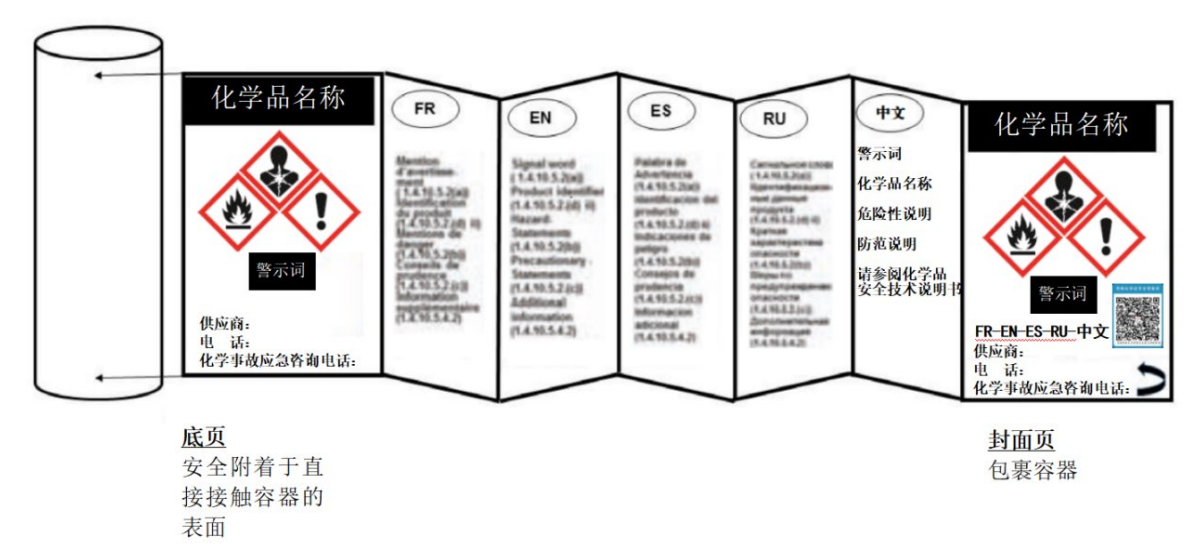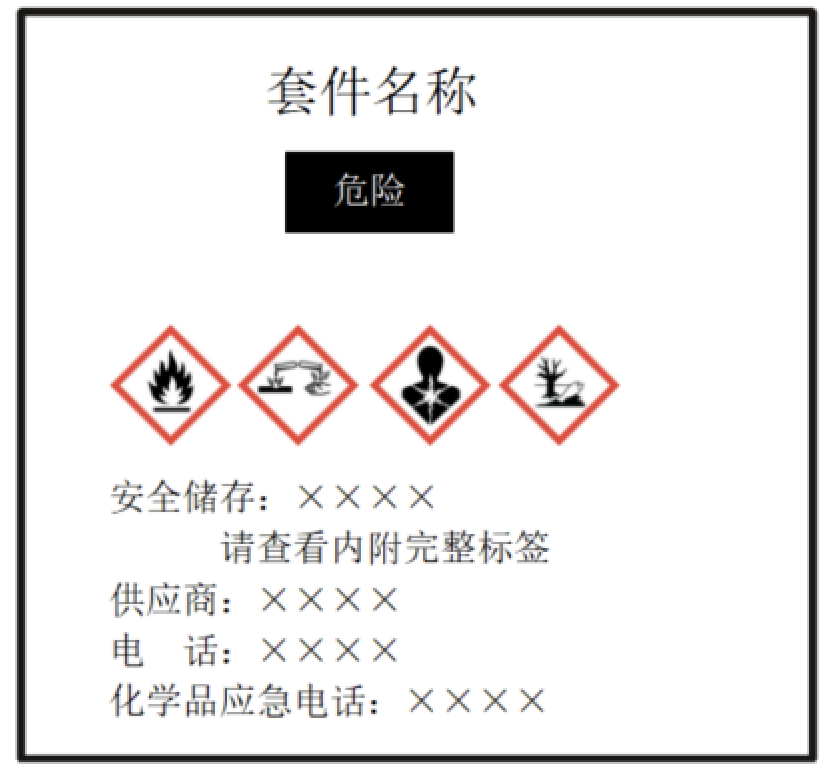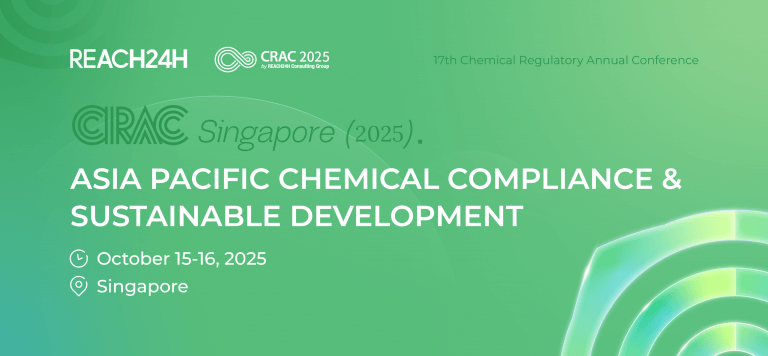Introduction
On August 13, 2025, the Ministry of Industry and Information Technology (MIIT) officially issued the draft of the mandatory national standard "Regulations on the Preparation of Chemical Safety Labels" for public comment. The period is from August 14 to October 12, 2025. Relevant organizations and individuals can submit the "Mandatory National Standard Feedback Form" to KJBZ@miit.gov.cn through designated channels to provide feedback. The key points of the Regulations are as follows:
Scope of Application
This standard applies to the preparation, production, and use of chemical safety labels. (Note: For products with specific safety labels, such as pesticides and gas cylinders, these specific standards shall apply.)
Reference Documents
Globally Harmonized System of Classification and Labelling of Chemicals (UN GHS 10th Revised Edition)
GB 12268 Dangerous Goods List
GB/T 23704 Inspection of printing quality of two-dimensional bar code symbols
GB 30000.1 to GB 30000.29 Specifications for Classification and Labelling of Chemicals
(Note: GB 30000.30-2025 "Specifications for Classification and Labelling of Chemicals Part 30: Desensitized Explosives" has been published, and this standard is not mentioned for the time being)
Major Updates: Adding hazardous chemical safety information code
The label element "hazardous chemical safety information code" is added. For hazardous chemicals circulating in China, before entering the circulation link, a hazardous chemical safety information code or other QR codes integrated with the hazardous chemical safety information code shall be provided.
This element serves as supplementary information to "non-standardized information" and does not conflict with the validity of standardized hazard information, which is in line with the provisions of "Use of non-standardized or supplementary information" in Section 1.4.6.3 and "Supplementary information" in Section 1.4.10.5.4.2 of the 10th Revised Edition of GHS.
Major Updates: Changing the Order of Hazard Statements
Some hazard statements can be merged. For example, "Toxic if swallowed" and "Toxic in contact with skin" can be merged into "Toxic if swallowed or in contact with skin".
To avoid obvious repetition or redundancy in the information conveyed by hazard statements, the following order rules can be adopted:
a) If the selected statement is "Very toxic to aquatic life with long-lasting effects" (H410), the statement "Very toxic to aquatic life" (H400) can be omitted;
b) If the selected statement is "Toxic to aquatic life with long-lasting effects" (H411), the statement "Toxic to aquatic life" (H401) can be omitted;
c) If the selected statement is "Harmful to aquatic life with long-lasting effects" (H412), the statement "Harmful to aquatic life" (H402) can be omitted;
d) If the selected statement is "Causes severe skin burns and eye damage" (H314), the statement "Causes severe eye damage" (H318) can be omitted.
Major Updates: Optimizing Labels for Small-Package Chemicals
For small package chemicals with a packaging volume of 100 mL or less, simplified labels can be used; for packaged chemicals that cannot be directly affixed with safety labels due to restrictions on packaging shape/size and usage methods, foldable labels can be used.
Simplified Labels
For small package chemicals with a packaging volume of 5 mL or less, the label elements can be simplified to only include the chemical identifier. However, the outer packaging of the product shall have a safety label containing all label elements, and it shall also indicate that the small package chemicals should be stored in the outer packaging containing the safety label with all label elements when not in use.
Foldable Labels
Foldable labels consist of a cover page, a text page (inside page) and a bottom page (attached to the surface of the container in direct contact).
Cover page: The label elements include chemical identifier, pictogram, signal word, supplier name and contact number, emergency telephone number, and hazardous chemical safety information code. (Note: For packaging with a volume of 100 mL or less, the hazardous chemical safety information code can be omitted.)
Text page: The label elements include chemical identifier, signal word, hazard statements, precautionary statements, and reference prompts for materials.
Bottom page: The label elements include chemical identifier, pictogram, signal word, supplier name and contact number, and emergency telephone number.
Example:

Major Updates: Adding Requirements for the Use of Safety Labels in Kit Packaging
For kits, inner packages are required to be affixed with safety labels. In addition to the kit name, supplier identification, emergency telephone number and reference prompts for materials, the outer packaging is also required to be affixed with the safety label of each hazardous chemical in the kit (except for supplier identification, emergency telephone number, hazardous chemical safety information code and reference prompts for materials, other label elements shall be complete).
When there are many precautionary statements in the safety labels on the outer packaging of the kit, the precautionary statements can be separated from other label elements, and the precautionary statements of each hazardous chemical can be grouped together and displayed on the same side of the outer packaging, which is visible under normal use conditions. However, safety storage measures only need to appear once.
When the surface area of the outer packaging of the kit is not large enough to affix the safety label of each hazardous chemical in the kit, a safety label for the whole kit shall be affixed on the outer packaging. The label elements shall include at least the chemical identifier (kit name), signal word, precautionary statements belonging to safety storage measures, supplier identification, emergency telephone number, and a prompt "Please check the attached complete safety label".

This revision marks a new stage in China's chemical safety management system, which will officially replace the GB 15258-2009 standard, striving to improve the accuracy and effectiveness of hazardous chemical hazard information transmission. The new regulations are in line with the policy requirements of "one enterprise, one product, one code", strengthen the traceability of chemical hazard information by building a full-chain traceability mechanism, and effectively solve the problem of information gaps in the circulation of SDSs and Labels in the supply chain.
It is recommended that relevant enterprises, during the policy publicity period, timely provide professional feedback based on the actual operating conditions, simultaneously initiate the upgrading of their compliance management systems, focus on optimizing the label digital management process, and effectively enhance the transparency of supply chain information. If you have any questions in this regard, please feel free to contact us at customer@reach24h.com.





